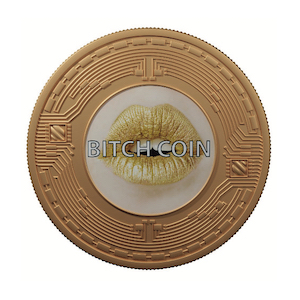Deconstruction and Rebirth: Did Banksy really “save” art history?
By Yaxin Li
When we talk about classical art, like the works of Da Vinci, Van Gogh and Monet what often comes to mind, with these colossal artworks is that they are protected in art galleries, for us to be able to engage with them. Did it ever occur that one day these works would be coupled with ‘Tom and Jerry’ or even abandoned shopping trolleys floating in a dirty landscape? In a new book ‘How Banksy Saved Art History’, street artist Banksy takes a bold and provocative approach to ‘saving’ these traditional art images and reexamining their value. By ‘deconstructing and regenerating’ and ‘destroying the canon’ and reinventing its meaning, can this enigmatic artist really bring art history back to life? Perhaps his work is not only a rebellion against the classics, but also a challenge to new definitions of art, history and society. Read more on ‘Deconstruction and Rebirth: Did Banksy really “save” art history?
Image on left-hand side Private Collection. Banksy, Rembrandt, 2009. Googly eyes, acrylic on canvas, 102.3 x 77 x 9.3 (40 1/4 x 30 3/8 x 3 5/8).
So who is Banksy? A mind-boggling street artist, a ‘mysterious rebel’ of modern art, a cultural deconstructor whose face we’ve never seen but who continues to make waves. His work is more like a ‘redefinition movement’ of classic art.
Banksy’s work directly questions the ‘authority’ of art. Instead of following the path of the academy and growing up under the shelter of museums, he opened his own ‘gallery’ literally on the streets. He became the first real street artist to have a celebrity following and to be seen by the art world as a legitimate artist.
He never tried to appeal to the aesthetics of the elite, but went on to directly touch the emotions and thoughts of his audience through his work. ‘Toxic Mary’ is a good example of Banksy’s bold transformation of the Virgin Mary’s sacred breastfeeding image into a breastfeeding scene with toxic symbols – is this a provocation to religious beliefs?
Is it a provocation to religious belief to transform the sacred breastfeeding image of the Virgin Mary into a breastfeeding scene with toxic symbols? Or is it a reminder not to follow blindly?
These questions are raised silently in Banksy’s work, making us rethink classic symbols that we thought we were already familiar with. This is Banksy’s way of deconstruction.
The world’s most enigmatic smile becomes less of a symbol of art with Banksy’s creation, a bold makeover of Da Vinci’s Mona Lisa. Banksy added a mocking, exaggerated smile to the face of the mysteriously smiling woman, seemingly ‘flirting’ with the authority of the artwork.
This alteration not only brings a smile to the face but also makes the audience realise that even an artistic masterpiece such as the Mona Lisa is not immune to being deconstructed and consumed by modern pop culture.
Behind this wry smile, Banksy makes us rethink the ‘timelessness’ and ‘plasticity’ of art. Over the years, the Mona Lisa has been copied, interpreted, and even adapted into a variety of commercial symbols, and it seems to have gradually become a symbol of pop culture.
Through this slightly comical deconstruction, Banksy reminds us to question whether the classics have been over-consumed and whether we truly understand the original meaning of these works. His work makes us re-examine how we approach the classics through a modern lens – is it reverence? Consumption? Or is it an endless re-creation? It also questions the very construction of how the whole art world is put together.
Banksy not only ‘deconstructs’ the classics, but also gives them a new social life so that these art treasures can be brought to a contemporary reality in the modern context.
By adding elements with modern social symbols to the original works, Banksy closely integrates these classics with contemporary social issues, allowing people to face up to the conflicts and crises of the moment in an aesthetic way.
Show Me the Monet (2005) is Banksy’s satirical re-creation of Monet’s Japanese Bridge. While the serene garden in the original symbolises the harmony between man and nature, Banksy transforms the serene painting into a scene of conflict by adding abandoned shopping carts and rubbish.
These discards float harshly in Monet’s pond, exposing the erosion of nature by modern consumerism. Banksy uses this contrasting visual effect to question our endless demand for nature and warn us of our disregard for the environment.
Van Gogh’s Sunflowers which is a famous artwork, has always symbolised life and vitality, but in Banksy’s mind, these flowers have withered, symbolising modern society’s over-reliance on and consumption of natural resources.
The meaning of the sunflower is changed from a symbol of the natural beauty of life to a metaphor for the exploitation of non-renewable resources. This work recreates Van Gogh’s sunflowers, and at the same time reveals the brutal erosion of nature by modern industrialisation.
The creation of ‘Regeneration’ makes these monumental works of art no longer just a historical legacy, but a tool of social criticism with contemporary significance, prompting us to rethink our own roles and responsibilities in the current society.
As art critic and author Kelly Grovier points out, Banksy’s work does not simply ‘reinvent’ art history, but rather gives it contemporary life through critical reinvention.
In ‘How Banksy Saved Art History’, Grovier takes us on an in-depth exploration of the ways in which Banksy’s work reveals the problems of modern society and awakens a new understanding of art history.
The art critic, who is active in the Times Literary Supplement and BBC Culture, shows readers how Banksy’s work can be a powerful medium for social critique with his keen insights and deep background in art history.
This book not only gives us a deeper understanding of Banksy, but also leads us to consider how art history can still reverberate in today’s world.
Does art really need to be ‘saved’? This question comes to mind when we stop to gaze at Banksy’s rebellious and ironic creations.
Art philosopher Arthur Danto’s theory of ‘the end of art’ predicts the ‘functional dissolution’ of art, suggesting that as people no longer find unique breakthroughs or ‘revolutionary’ ideas in new art, art seems to have come to a dead end.
It was believed that art seemed to have come to an end as people no longer found unique breakthroughs or ‘revolution’ in new art. Banksy, however, attempts to refute this view with his bold and poignant works – not merely recreating the classics, but subverting them to mirror modern society.
Find out about ‘How Banksy Saved Art History’ here at Thames and Hudson.com
If you enjoy reading Deconstruction and Rebirth: Did Banksy really “save” art history?, why not try The Invisible Art; Scent Brings Pre-Raphaelite Art to Life
Cent magazine London, Be Inspired; Get Involved.











